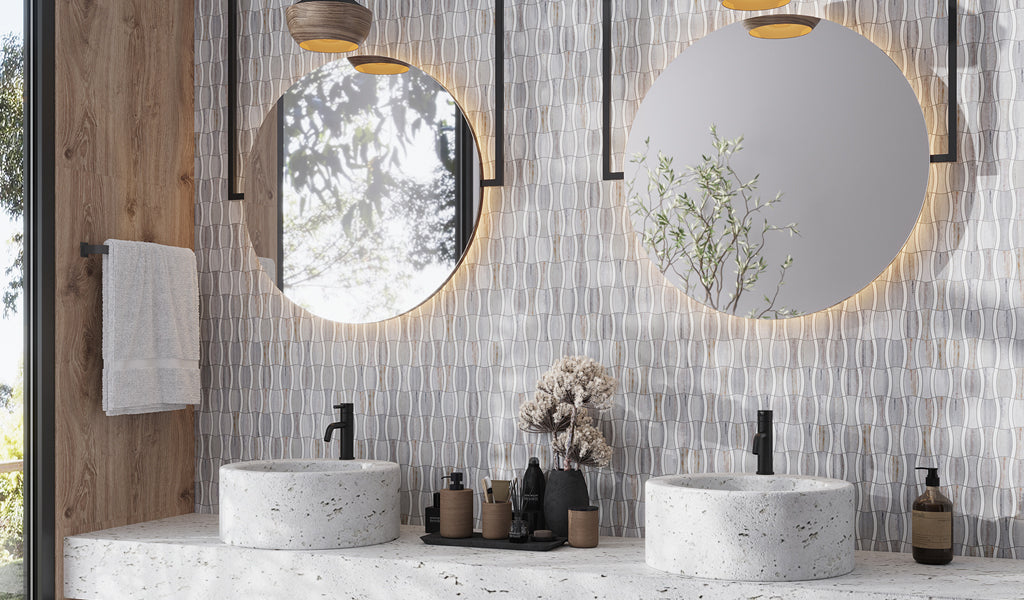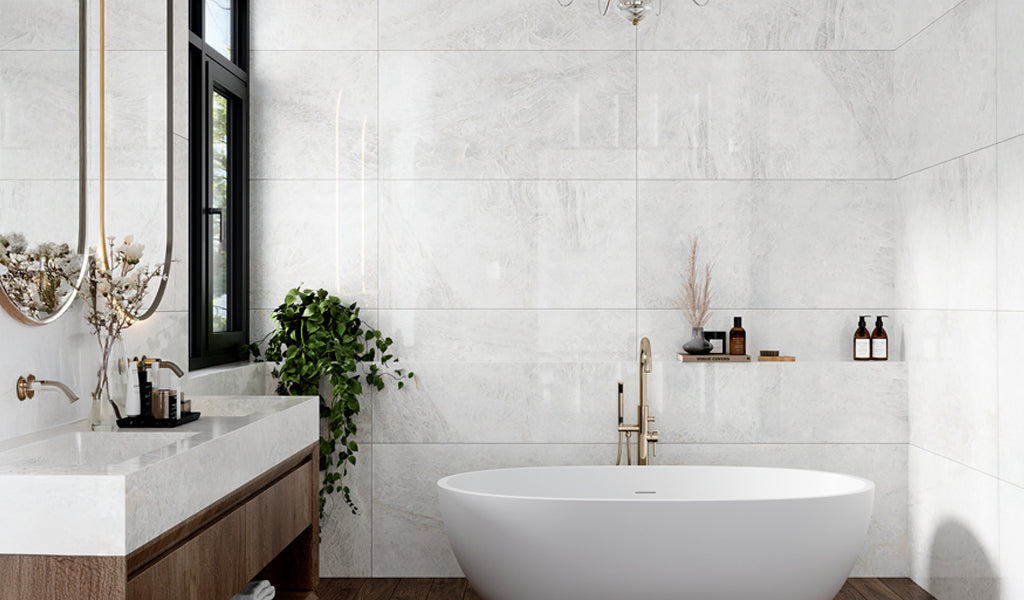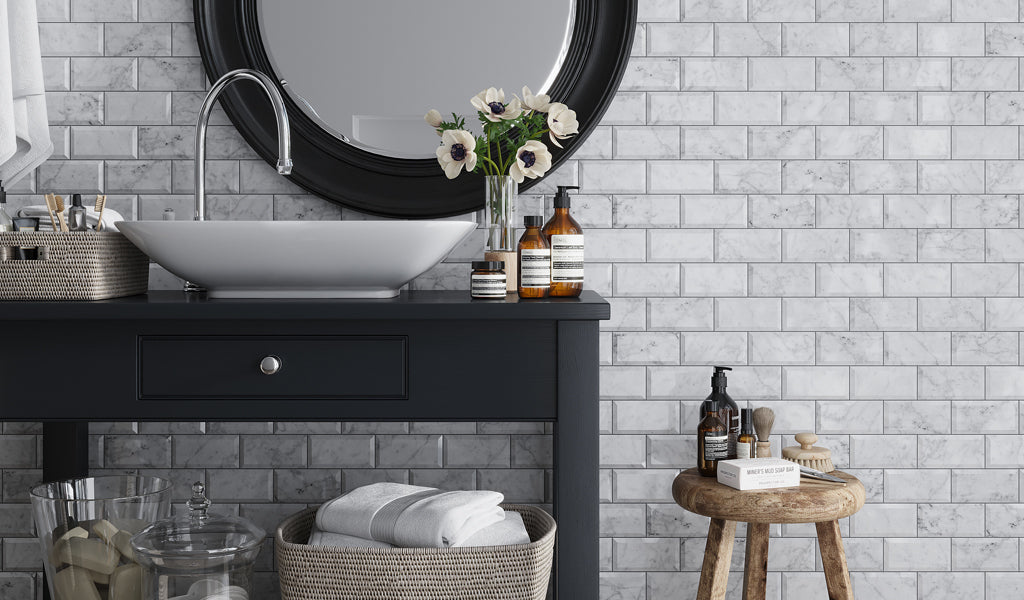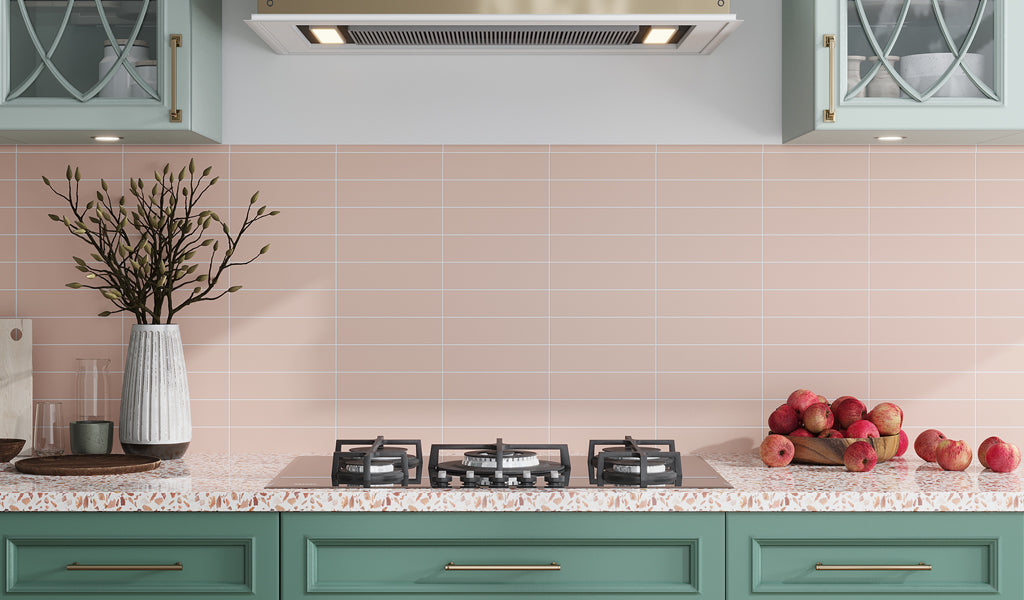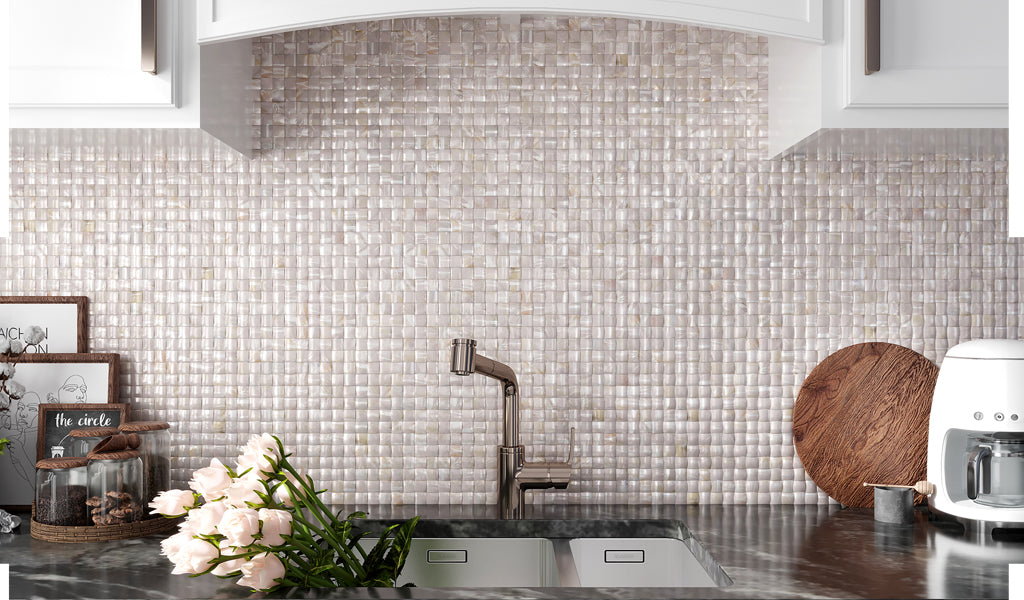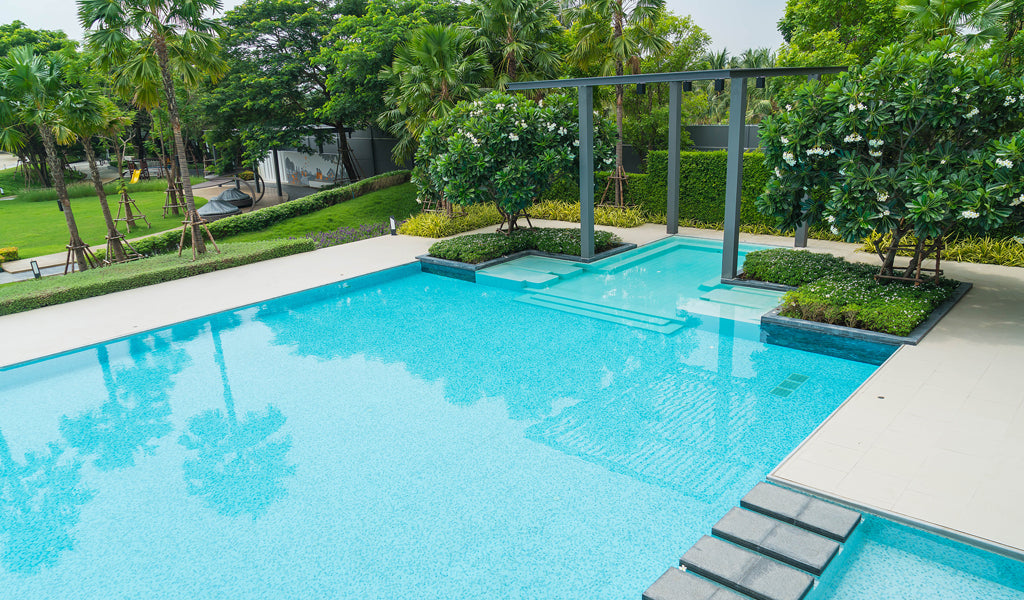Non-Slip Bathroom Flooring Tile: What to Choose?
Nov 04, 2024Selecting bathroom floor tile isn't just about looks, it's also about safety. Choose tiles that are both stylish and secure. After all, what's the point of a good looking space if you can't enjoy it without worrying about slips and falls?
Safety is a priority in any bath space, but it's especially important when using tile given the constant presence of water. Let's take a look at slip-resistant bathroom tile flooring options that offer superior grip.
Top Non-Slip Bathroom Floor Tile Options
1. Ceramic Tiles
Ceramic tile with a matte or textured finish is a perfect bathroom flooring option. It offers exceptional durability and water-resistant properties. This bathroom tile flooring provides excellent grip in wet areas. Moreover, they are easy to clean and maintain and come in a wide range of colors and patterns. Also, they are an affordable pick which makes them practical for bathroom flooring ideas.
2. Porcelain Tiles
This type of bathroom flooring is similar to ceramic tiles, but denser and stronger. Porcelain tile are highly resistant to water and daily wear and tear. A matte or textured option offers exceptional traction in wet areas, making them perfect for bathroom floors. Porcelain floor tiles are impervious and won't be damaged by extreme exposure to water. If this bathroom tile flooring is properly maintained, it can retain its beauty for decades.
3. Natural Stone
Natural stone such as travertine, slate, and marble tile are ideal for bathroom floors. They can add luxury to your bathing area. Their natural textures and finishes create a warm and inviting atmosphere, while also offering exceptional slip resistance. These tiles can be honed or tumbled, allowing you to personalize the appearance of your bathroom floor. Note that natural stone tiles aren't 100% non-porous, which makes them prone to staining and water damage. Sealing the tiles during installation and resealing every 6-12 months will protect your flooring from stains and moisture damage.
4. Glass Tiles
Glass tile in glossy, matte, or textured finish offers better traction in wet areas. It is highly water-resistant, making for a stylish and safe bathroom flooring option. Moreover, glass mosaics are low maintenance and the increased grout lines offer enhanced traction underfoot. Its reflective surface can brighten up the room, creating an open and inviting atmosphere. Our Sky Blue 11.9 in. x 11.9 in. Polished Glass Mosaic Tile and Gray 11.8 in. x 11.8 in. Linear Glass Mosaic Floor and Wall Tile are among stunning options to consider!
What to Consider When Selecting Non-Slip Tile?
Non-slip bathroom flooring is a paramount safety consideration, particularly in moisture sensitive areas. If you're wondering how to select a non-slip tile, worry not. Below are some tips that will help you in choosing the correct types of bathroom flooring:
- Choose the best flooring for bathroom with a higher COF (Coefficient of friction). Look for tiles specified as COF of 0.4 or higher.
- Select bathroom floor tile with a textured or matte finish for better grip.
- Matte finish tiles offer better slip protection than most glossy tiles.
- Choose bathroom flooring ideas that are easy to clean and maintain. Smooth finished tiles make cleaning a breeze but they can be slippery when wet.
Tips for Creating a Non-Slip Bathroom
All showers and wetrooms can be slippery, especially with the presence of water. It's important to make sure your bathroom floor is set up to prevent slips.
Here are some top tips to help you create a non-slip bathroom:
- Install Handrails near the shower, tub, and toilet for support.
- Use non-slip mats in front of the shower or bathtub to avoid slips.
- Apply non-slip strips to the bottom of the bathtub or shower.
Conclusion
Choosing the right non-slip tiles for your bathroom floor tile is crucial for a high performing space. With a myriad of styles available, it's possible to find a balance between style and safety. Bathroom tile allows you to create an interior that looks great and is also safe to use. By following our guide and seeking advice from an expert at Apollo Tile, you can find non-slip tiles that blend beauty and functionality, ensuring your bathroom flooring remains beautiful and safe for years to come.
Frequently Asked Questions:
1. What is a non-slip floor tile?
Non-slip bathroom floor tile is a type of tile that has been specially designed to provide enhanced traction underfoot and reduce the menace of accidents, especially in wet areas. They have a textured surface that offers better grip. This makes them a good choice for areas where safety is concerned, such as homes with children or the elderly.
2. What are the different floor tile slip resistance ratings?
Some common Coefficient of Friction (COF) rating for floor tiles:
- COF < 0.4: Considered slippery, especially in wet conditions.
- COF 0.4 - 0.6: Moderately slip-resistant.
- COF 0.6 - 0.7: Slip-resistant.
- COF > 0.7: Highly slip-resistant.
3. How do I ensure my bathroom tile flooring is slip-resistant?
Choose bathroom floor tile with a textured or matte surface. These tiles offer superior grip, reducing the risk of slips. Select tile with a high COF rating and consider applying a non-slip coating to existing tiles. For added protection, install adhesive anti-slip strips and grab bars in wet areas.
4. Do anti-slip tiles come in different colors, shapes, and sizes?
Yes, anti-slip tiles come in a wide range of shapes, colors and sizes, as well as various materials like porcelain, ceramic, glass, and stone tile.
5. Is non-slip bathroom tile different from non-slip outdoor tile?
Yes, non-slip bathroom tile flooring is different from non-slip outdoor tile. Outdoor tiles are designed to withstand harsh weather conditions and have a rougher surface for better traction.
6. Is porcelain tile too slippery for bathroom flooring?
Porcelain tile can be slippery when wet, but it depends on the finish you choose. Polished porcelain tiles are more slippery due to their smooth surface. Matte or textured porcelain tiles are less slippery and offer better grip.
7. What type of finish is used for non-slip bathroom floor tile?
Non-slip bathroom floor tiles typically have a matte or textured finish for better traction that minimizes the risk of slips and falls.
8. Do mosaic tiles offer better grip than large tiles?
Mosaic tiles have increased grout lines, which offers more texture and a greater layer of traction. This makes for an excellent shower floor tile where slip resistance is crucial.
9. What's the difference between slip resistance and water resistance?
Slip resistance refers to a surface's ability to provide better traction, even when wet, while water resistance is its ability to resist water absorption. Both are important for bathroom flooring to ensure safety and durability.
10. How do I clean non-slip bathroom tile flooring?
Follow the below steps to clean non-slip flooring for bathrooms:
- Mop the bathroom floor tile daily with water and a mild cleaning solution.
- Use a microfiber mop that gently picks up the dirt and grime without scratching the surface of the tile.
- Choose a cleaning solution that is specifically designed for bathroom flooring. Do not use harsh or abrasive cleaners.
11. Do anti-slip bathroom floor tile require sealing?
While porcelain and ceramic tile do not require sealing, the grout between the joints should be sealed to prevent moisture penetration and staining. Marble tiles require sealing as they are susceptible to water absorption.

